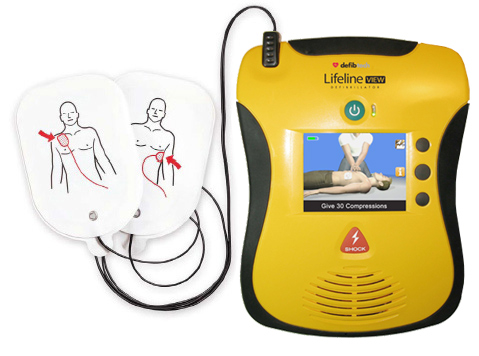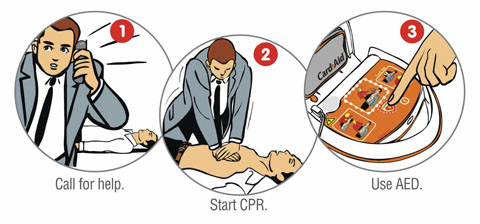Categories
Automated External Defibrillator for Cases of Sudden Cardiac Arrest

It is a well-known fact that sudden cardiac arrest is one of the triggers of death of many people in the USA. The main problem is that this very condition can happen to anyone and at any age. No one is protected. No one’s safety is ever guaranteed. An automated external defibrillator (AED) is a reliable device used for restoration of a regular heart rhythm. As it is easy to operate, it can be effectively used both by people with medical background and those without one.
This is a lightweight and portable device, which works delivering an electric shock through the chest and right to the heart. The method allows a normal heart rhythm to resume. Want to know more?
Contents
What Is an Automated External Defibrillator?
AEDs were firstly introduced in 1979 as devices used for analyzing cardiac rhythms. As for today, they are commonly used by trained emergency personnel all over the globe.
This is a special medical device that is commonly used for recognizing the absence/presence of rapid ventricular tachycardia or ventricular fibrillation. With no need of intervention by an operator, it determines whether an electrical shock right to the heart must be performed (defibrillation).
An automatic external defibrillator can be used on those victims, who are unconscious and aren’t breathing in a normal way. As a rule, it is used together with CPR (Cardio Pulmonary Resuscitation) in cases of sudden cardiac arrest. It is forbidden to use it on patients, who are less than eight years old or on those weighting less than 55 pounds.
Standard AED models help to restore a normal heart rhythm in cases of sudden death or heart attack. Most modern devices are portable and enable more patients to respond to emergency cases that require defibrillation.
How to Use Automated External Defibrillator?

When the device shocks the patient’s heart, it makes it pause momentarily, which gives it time to reset, allowing its special cells regaining control and then firing rhythmically, pushing blood. An automatic external defibrillator works on two heart arrhythmias, which means that only they can benefit from the use of this medical tool. It is important to remember that AED cannot save all people with sudden cardiac arrest.
The device automates different stages in performing defibrillation. Your main task is to recognize that the cardiac arrest has occurred and then attach the adhesive electrodes to the person’s chest. What are these electrodes for? Their function is recording the electrocardiogram and then giving a shock, if indicated.
The interpretation of the electrocardiogram is a fully automatic process. So, when electronic algorithm in AED detects ventricular fibrillation or ventricular tachycardia, the device charges itself automatically to a predetermined level. Many modern models also display the heart rhythm on a special monitor screen.
When an automated external defibrillator is fully charged, it informs that the shock should be given. Many models have a 1-2-3 numerical scheme that indicates the next procedure required. Some of them illuminate the control that administers the shock. When the shock to the heart has been delivered, AED analyzes electrocardiogram again.
Do you know that when one is suffering from a sudden cardiac arrest, the chances for his survival decrease nearly by 10% for every minute that goes by with no defibrillation? Today about thousands of lives are saved due to the use of automated external defibrillators. Due to modern technologies and easy operations, the devices can be used both by professionals and those without medical background.



